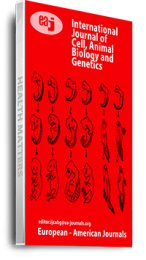By cryobiological, immunological and biophysical methodsit is established that in the mechanism of temperature shock of cell the leading role is assignedto osmosis, and instant movement of water through it at the expense of an equilibration of osmotic pressure that is the reason of destruction of a cell membranedeprives a cytoplasmic membrane of properties of semipermeability.It was studied the fortification mechanism sperm when cooling and it is established that the fortificant accumulates on surfaces of a cell and creates a hydrophobic phase that slows down the osmotic action connected with an balancing of concentration gradients in ”cell-wednesday” system. It is established, also, that the protective layer is created on a cytoplasmatic membrane on an extent of 2-5 minutes from the moment of its contact with an anti-shock component – fortificanty and then strongly is kept on it even at reusable washing of cells by isotonic environments.These theoretical research were taken as a basis of a technique of determination of anti-shock properties of cryoresistance various the bioactive substances and biochemical connections by search, development and improvement of environments for a cryopreservation of sperm of different types of animals.When freezing sperm in nitrogen, an obligatory component of the cryoprotective environment is the native yolk of eggs containing many phospholipids and lipoproteins which at interaction with plasma membranes sperm modify them by increase of resistant and stability [1, 3, 4, 7, 9]. Being adsorbed by lipophilic and hydrophilic sites of plasma membranes lipid complexes almost by 2-3 times thickencell membrane that gives stability to sperm to extreme temperature, osmotic, immunological, physical and chemical and mechanicalto damages [5, 6, 9,12, 13]
Keywords: Sperm, cellular membrane, chicken yolk, cryopreservation, lipoproteins, phospholipids, soy

